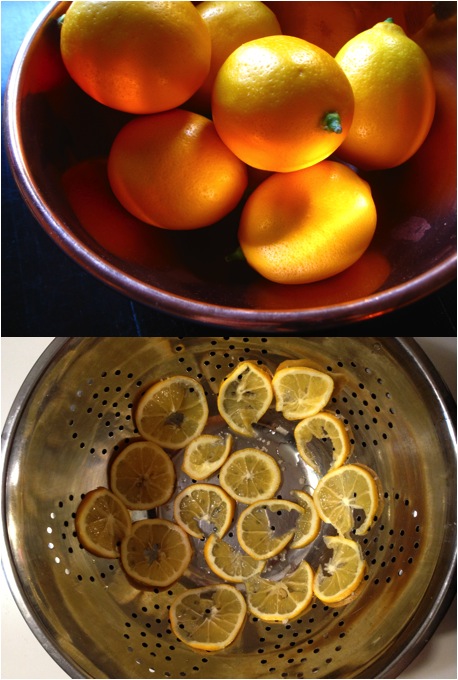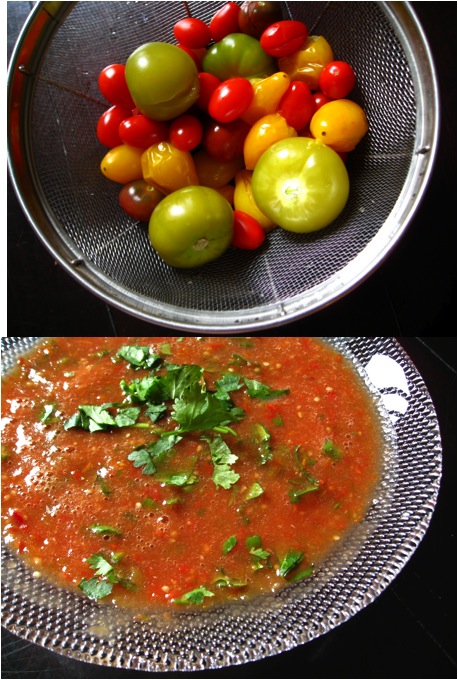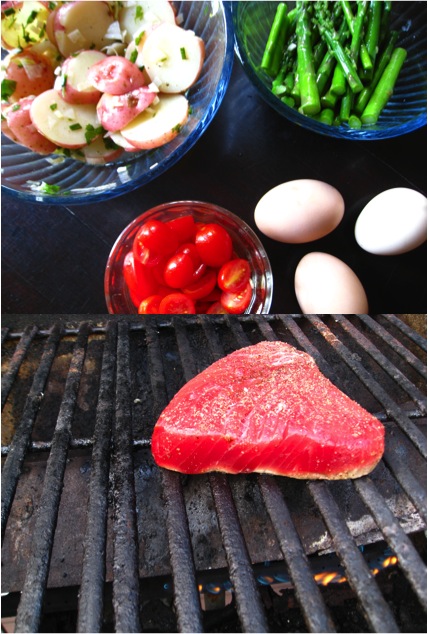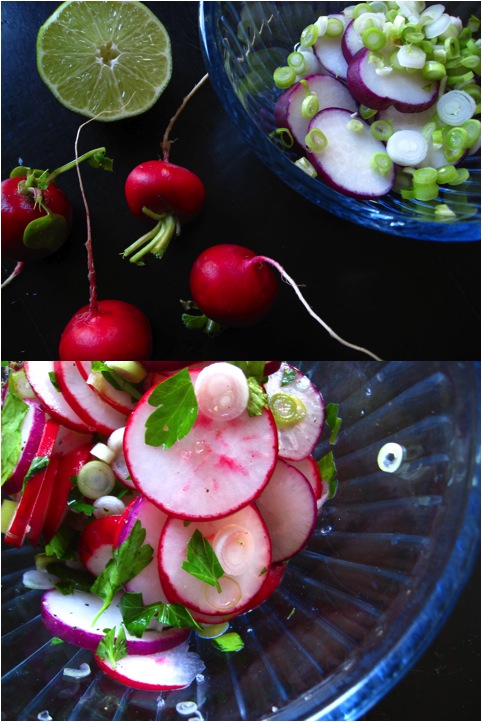
Homemade Soft Pretzels
Fall is the time for wooly sweaters, weekend projects and Oktoberfest. Instead of a typical apple pie pastime, I had my taste buds set on a rather adventurous experiment of making homemade soft pretzels and from-scratch mustard. After grabbing several generously sized bags of mustard powder and whole mustard seeds at Kalustyans, the idea of making my own mustard swelled into making four different kinds — it is my favorite secret ingredient, after all. It also didn’t hurt that my cousin and her beer-brewing fiance were in for the adventure and came bearing homemade suds and the same amount of experimental exuberance.
The result? After tasting a piping hot pretzel from my own oven, dare I say I’ll never buy a pretzel from the corner cart again. As for the mustard — four may have been excessive, but it revealed a few standout favorites which I’ve included below. Each of these Oktoberfest treats was made with relative ease, but you may want to consider making the mustard ahead of time as it will continue to mellow out each day — and at first taste, you {and your nasal passages} will quickly understand why mustard plaster was a treatment for pleurisy back in the day.

Homemade Mustards (left to right clockwise: coarse rosemary, brown sugar, red wine)
Homemade Soft Pretzels
Recipe From the Fresh Loaf | Makes 6 large pretzels — you might as well double it!
1 teaspoon instant yeast {or bread starter}
1 tablespoon brown sugar
2-3 cups all-purpose unbleached or bread flour
1 teaspoon salt
1 cup warm milk (approximately 110 degrees, which is 1 minute in my microwave)
- Combine all of the ingredients in a bowl and mix together until it forms a ball. I start with 2 cups of the flour and mix it together until it forms something like a thick batter, then add more flour a handful at a time until it’ll form a nice ball that I can knead by hand.
- Either use an electric mixer to mix the dough for 5 minutes or remove it from the bowl and knead it by hand for 5 to 10 minutes until the dough begins to get smooth and satiny.
- Return the ball of dough to a clean, greased bowl, cover with plastic wrap, and set it aside to rise until it has doubled in size, approximately an hour.
- Before shaping, start preheating the oven to 425 degrees and bring a large, wide pot of water to a boil.
-

Roll and rest the pretzel dough
- Cut the dough into 6 pieces. Roll each one into a short log, cover with a towel, and let the dough relax for 5 to 10 minutes. After it has relaxed you should be able to roll it out and stretch again fairly easily.
- Let them relax again and give each a third roll and stretch session until about 15 inches long and about as big around as your index finger. They’ll nearly double in width while baking, so it is ok to roll them out quite thin.
- Place a rope of dough on the work surface in front of you. Take each end in a hand, loop the dough away from you, and bring the ends back toward your stomach, crossing them about an inch above the rope. Apply a little bit of pressure to make the loops stick together, but not too much because you don’t want then to flatten out.
- Dunk each of the pretzels into the boiling water for 5 seconds, then place them onto a baking sheet and sprinkle with coarse salt immediately while wet (I use the kosher stuff that is easy to find at the grocery store).
- Place the baking sheets into the oven. It took around 15 minutes for my pretzels to get golden and brown. Remove from the oven and eat immediately.

Homemade Fig Mustard
Fig and Port Grainy Mustard (slightly sweet)
½ Tablespoons Brown Mustard Seeds
1½ Tablespoons Yellow Mustard Seeds
½ Teaspoon Kosher Salt
1 ¼ Cup Mustard Powder (not Coleman’s)
1½ Tablespoons Cider Vinegar
1/4 Cup Tawny Port
3 Tablespoons Chilled Fig Simple Syrup (recipe below)
4 Fresh Figs
½ Cup Granulated Sugar
½ Cup Water
- Add figs, sugar and water to a small saucepan.
- Over medium high heat, stir until sugar dissolves. Continue cooking a few minutes longer until figs become very soft.
- Mash the figs into the syrup and keep stirring. Once the figs are well mashed and fully incorporated into the mixture, remove from heat. Pour contents of saucepan through a strainer and remove the large bits of fig.
- The syrup that’s left is the fig simple syrup. You can use the fig bits in oatmeal, ice cream or just eat them. You will have syrup left over after making the mustard.
- Grind the mustard seeds in a spice or coffee grinder for a few seconds, or in a mortar and pestle. You should leave them pretty chunky (near whole) because you want this to be a grainy mustard…but you could grind them to whatever consistency you like.
- Pour the ground mustard seeds into a bowl and add the salt and mustard powder.
- Add in the vinegar, port and simple syrup and stir well. Once everything is thoroughly mixed, pour everything into a glass jar (with a lid) and refrigerate.
- Wait at least 12 hours before using.
- Mustard made this way will last several months if refrigerated in a sealed jar. This recipe makes 1/2 – 3/4 cups of mustard.
Brown Sugar Mustard (#1 crowd fav)
1 cup dry mustard
1/2 cup light brown sugar
1/2 tsp dried marjoram
1 tsp salt
dash cayenne
1/2 cup white vinegar
1/2 cup olive oil
Coarse Rosemary Honey Mustard (a standard whole grain)
½ Tablespoons Brown Mustard Seeds
1½ Tablespoons Yellow Mustard Seeds
½ Teaspoon Rosemary Salt
¾ cup mustard powder
¼-1/2 cup champagne vinegar
2 tbsp honey
Coarse-Ground Red Wine Mustard (packs a red vinegar punch)
1/4 cup white or brown mustard seeds
1/4 cup red wine vinegar
1/4-1/2 cup dry red wine
1/2 cup dry mustard
2 tsps salt
1/4 tsp allspice
2 tbsps cold water
- For any of the recipes above, place all the ingredients in a blender or food processor.
- Process for 30 seconds, scrape down the sides and process for 30 seconds more.
- Add additional liquid if to thick as mustard powder & seeds will absorb more of the liquid.
- Put in an airtight container and let stand at room temperature overnight or up to 1-2 days more. The mustard will mellow out in heat over time. Once it reaches desired mildness store in the fridge.
Favorite Dishes with Mustard:
Cumin & Dill Dijon Egg Salad with Radish Sprouts
Roasted Dijon Chicken Salad w/ Dried Cranberries & Sunflower Seeds
Whole-Grain Mustard & Rosemary Pork Chops
 If you know me well, you know how much I love to #putaneggonit. Pretty much any dish can be made better with a gooey yolk coating whatever was lucky enough to be blessed with it. So with a container of grandma’s leftover sauce in the freezer and a new carton of eggs in the fridge, I added one additional ingredient to make this one-pan dinner a keeper: spice. You could call this your lazy evening meal, but I bet it would impress any dinner guest too.
If you know me well, you know how much I love to #putaneggonit. Pretty much any dish can be made better with a gooey yolk coating whatever was lucky enough to be blessed with it. So with a container of grandma’s leftover sauce in the freezer and a new carton of eggs in the fridge, I added one additional ingredient to make this one-pan dinner a keeper: spice. You could call this your lazy evening meal, but I bet it would impress any dinner guest too.




































































